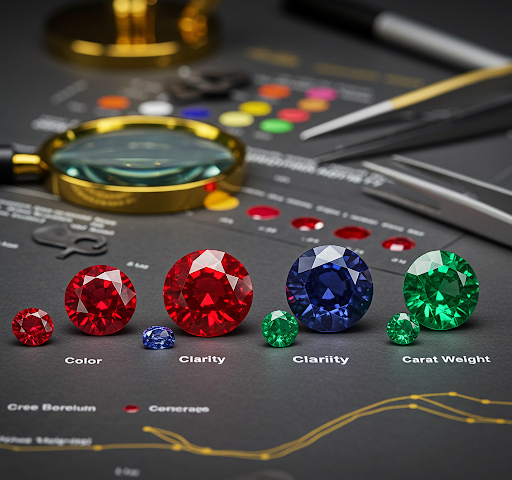
Chakra Jewelry: Balancing Energies
September 10, 2025
Jewelry Design School Reviews: Choosing the Right Program
September 12, 2025Hello friends, I’m Chuong Gems from Vietnam. Today, I’d like to share with you essential knowledge about gemstone grading reports and their significance in making informed purchasing decisions.
Understanding Gemstone Grading Reports
As a gemologist and jewelry enthusiast, I’ve learned that gemstone grading reports are crucial documents that help establish a stone’s value and authenticity. These reports serve as a universal language between dealers, collectors, and buyers.
The Four Key Grading Criteria
1. Color
Color is often considered the most important factor in determining a gemstone’s value. When evaluating color, we look at three aspects:
- Hue – The basic color of the gemstone
- Saturation – The intensity or purity of the color
- Tone – How light or dark the color appears
2. Clarity
From my experience, clarity refers to the absence of inclusions and blemishes. Different gemstones have different clarity standards – what’s acceptable in emeralds might not be acceptable in diamonds.
3. Cut
A well-executed cut brings out the best in a gemstone. It affects:
- Brilliance – How well the stone reflects light
- Fire – How well it disperses light into spectral colors
- Scintillation – The pattern of light and dark areas
4. Carat Weight
While size matters, I always remind my clients that bigger isn’t always better. A smaller stone with excellent color and clarity can be more valuable than a larger stone with poor qualities.
Examples of Grading Variations
Let me share some real-world examples I’ve encountered:
- A top-grade ruby might show a vibrant “pigeon blood” red color, with minimal inclusions visible to the naked eye
- A medium-grade sapphire could have excellent color but contain visible inclusions
- An entry-level emerald might have good color but significant inclusions (which is common for emeralds)
Impact on Value
In my years of experience, I’ve observed that grading directly influences price. For instance:
- A one-grade improvement in color can increase value by 50% or more
- Exceptional clarity in traditionally included stones (like emeralds) can double or triple the price
Using Grading Reports for Smart Purchasing
When advising my clients, I recommend:
- Always request a grading report from a reputable laboratory
- Compare grades across similar stones before making a decision
- Consider your priorities – some might prefer a larger stone with slightly lower clarity, while others prioritize color
Remember, while grading reports are essential tools, they should be combined with personal appreciation of the stone’s beauty. After all, you’ll be the one wearing and enjoying the gemstone!
If you have any questions about gemstone grading or need advice on your next purchase, feel free to reach out. Your satisfaction and understanding are my top priorities.




